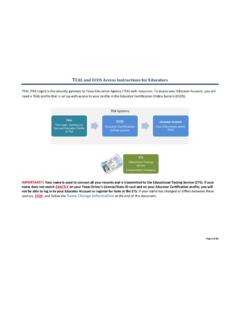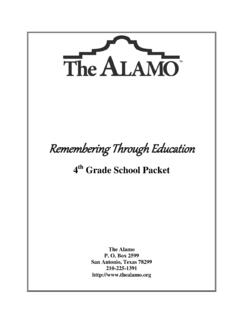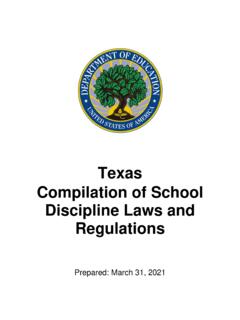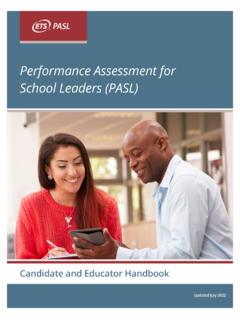Transcription of Space Food and Nutrition pdf - NASA
1 Educational ProductEducatorsGrades K 8 Space food AND NUTRITIONAn Educator s Guide With Activities in Science and MathematicsSPACE food AND NUTRITIONAn Educator s Guide With Activities in Science and MathematicsNational Aeronautics andSpace AdministrationEG-1998-12-115-HQEG-1999-0 2-115-HQSpace and food Nutrition An Educator s Guide WithActivities in Science and Mathematicsis available inelectronic format through NASA Spacelink one of theAgency s electronic resources specifically developedfor use by the educational system may be accessed at the following address: publication is in the Public Domain and is not protected by is not required for Aeronautics andSpace AdministrationSPACE food AND NUTRITIONAn Educator s Guide With Activities in Science and MathematicsNational Aeronautics and Space Administration Office of Human Resources and EducationEducation DivisionWashington, Working GroupNASA Johnson Space CenterHouston, TexasWritersAngelo A.
2 CasaburriAerospace Education Services ProgramNASA Johnson Space CenterHouston, TexasCathy A. GardnerDickinson Independent School DistrictDickinson, TexasEditorJane A. GeorgeTeaching From Space ProgramNASA HeadquartersWashington, thanks to the following contributors and reviewersCharles T. Bourland, Manager, Space Station FoodFlight Crew Support DivisionNASA Johnson Space CenterDebbie A. BrownISS Education LiaisonEducation Working GroupNASA Johnson Space CenterGregory L. Vogt, Educational Affairs LiaisonEducation Working Group NASA Johnson Space CenterKarol L. Yeatts, Einstein FellowMiami Dade County Public SchoolsMiami, Florida Space food and NutritionAn Educator s Guide With Activities in Science and MathematicsSpace food and NutritionAn Educator s Guide With Activities in Science and Mathematics, EG-1999-02-115-HQ IAcknowledgmentsSpace food and NutritionAn Educator s Guide With Activities in Science and Mathematics, EG-1999-02-115-HQ IIIN ational Science Education Standards.
3 VNational Mathematic Standards ..viIntroduction ..1 Mercury ..2 Gemini ..3 Apollo ..4 Skylab ..5 Apollo-Soyuz Test Project ..6 Space Shuttle ..7 International Space Station ..8 food Systems Engineering Facility ..9 Types of Space ..11 Classroom Activities ..14 Activities for Grades K 41. food Preparation for Space ..152. food Selection ..173. Planning and Serving food ..20 Activities for Grades 5 84. Classifying Space food ..215. Ripening of Fruits and Vegetables ..236. Mold Growth ..257. How Much Is Waste? ..308. Dehydrating food for Space Flight ..33 AppendicesAppendix A: Baseline Space Shuttle food and Beverage List ..34 Appendix B: International Space Station Daily Menu food List ..37 Appendix C: Gemini Standard Menu (4-day cycle) ..41 Appendix D: Space Shuttle Standard Menu (4 days of a 7-day menu) ..42 Appendix E: International Space Station Standard Menu (4-days of a 30-day menu).
4 43 Appendix F: Space Tortilla Formulation (Recipe) ..44 Appendix G: USDA food Guide Pyramid ..45 References ..46 NASA On-Line Resources for Reply Card ..49 Table of ContentsSpace food and NutritionAn Educator s Guide With Activities in Science and Mathematics, EG-1999-02-115-HQ VNational Science Education StandardsNational Research Council, 1996 Grades K 8 FoodPreparationfor Space FoodSelection Planning andServingFood ClassifyingSpace food Ripening ofFruits andVegetables Mold Growth How MuchIs Waste? DehydratingFood forSpace Flight Science as InquiryAbilities necessary to do scientific inquiryLife ScienceMatter, energy, and organization in living systemsScience in Personal and SocialPerspectivesPersonal HealthPhysical ScienceProperties of objectsand materialsPosition and motion of objectsNational Education StandardsVI Space food and NutritionAn Educator s Guide With Activities in Science and Mathematics, EG-1999-02-115-HQNational Mathematic StandardsNational Council of Teachers ofMathematics, 1988 Grades K 8 FoodPreparationfor Space FoodSelection Planning andServingFood ClassifyingSpace food Ripening ofFruits andVegetables Mold Growth How MuchIs Waste?
5 DehydratingFood forSpace Flight ComputationMeasurementReasoningObserving CommunicatingNational Mathematic StandardsSpace food and NutritionAn Educator s Guide With Activities in Science and Mathematics, EG-1999-02-115-HQ 1 From John Glenn s mission to orbit Earth to theInternational Space Station program, Space foodresearch has met the challenge of providing foodthat tastes good and travels well in Space . To better under-stand this process, we can look back through have always had to face the problem of how tocarry enough food for their journeys. Whether thoseexplorers are onboard a sailing ship or on the SpaceShuttle, adequate storage Space has been a problem. Foodneeds to remain edible throughout the voyage, and it alsoneeds to provide all the nutrients required to avoid vitamin-deficiency diseases such as in history, humans discovered that food wouldremain edible longer if it were dried and stored in a cooldry place until it was time to be consumed.
6 Early fooddehydration was achieved by cutting meat, fish, and cer-tain fruits into thin strips and drying them in food with salt or soaking it in salt water, an earlyform of curing food , also helped preserve it. Later techniques were developed for cooking, processing, pre-serving, and storing food in sealed containers. With thedevelopments of pasteurization and canning, a much larg-er variety of foods could be stored and carried on longjourneys. More recently, refrigeration and quick-freezinghave been used to help preserve food flavor and nutrientsand prevent these forms of packaged food products are fine fortravel on Earth, they are not always suitable for use onspace flights. There are limitations to weight and volumewhen traveling and the microgravity conditions experi-enced in Space also affect the food packaging. Currently,there is limited storage Space and no refrigeration.
7 Tomeet these challenges, special procedures for the prepa-ration, packaging, and storing of food for Space flightwere Space food and NutritionAn Educator s Guide With Activities in Science and Mathematics, EG-1999-02-115-HQIn the early days of the Space program, known asProject Mercury, Space flights lasted from a few minutes to a full day. Because of the short duration,complete meals were not needed. The major meal wasconsumed prior to the flight. However, the Mercuryastronauts did contribute to the development of spacefood. They tested the physiology of chewing, drinking,and swallowing solid and liquid foods in a microgravityenvironment. These first astronauts found themselveseating bite-sized cubes, freeze-dried foods, and semi-liq-uids in aluminum toothpaste-type tubes. The food wasunappetizing, and there were problems when they tried torehydrate the freeze-dried tube foods offered many challenges to food develop-ment.
8 First, a method of removing the food from the tubewas needed. A small straw was placed into the allowed the astronauts to squeeze the contents fromthe tube directly into their mouths. This is similar todrinking your favorite soda from a straw, except that thefood was a thicker substance. Special materials weredeveloped to coat the inner surface of the aluminum tubesto prevent the formation of hydrogen gas as a result ofcontact between metal and the acids contained in somefoods, such as applesauce. This aluminum tube packag-ing often weighed more than the food it of this, a lightweight plastic container wasdeveloped for future the later Mercury test flights, bite-sized foodswere developed and tested. These were solid foodsprocessed in the form of compressed, dehydrated bite-sized cubes. The cubes could be rehydrated by salivasecreted in the mouth as food was chewed.
9 Foods float-ing about in a microgravity environment could damageequipment or be inhaled; therefore, the cubes were coat-ed with an edible gelatin to reduce crumbling. Thesefoods were vacuum-packed into individual serving-sizedcontainers of clear, four-ply, laminated plastic film forstorage. This packaging also provided protection againstmoisture, loss of flavor, and Project Mercury flight food : food tube and drybite-sized snacks with a gelatin coating, which wasnecessary to control food and NutritionAn Educator s Guide With Activities in Science and Mathematics, EG-1999-02-115-HQ 3 The major advancements in food items during theGemini period were more variety and improvedpackaging. The dehydration process provided foodsthat were similar in appearance including color, taste,shape, and texture to freshly prepared food examples of the food flown on Gemini missionsincluded grape and orange drinks, cinnamon toasted breadcubes, fruit cocktail, chocolate cubes, turkey bites, apple-sauce, cream of chicken soup, shrimp cocktail, beef stew,chicken and rice, and turkey and gravy.
10 Dehydration occurs naturally in warm climates, and incold climates, it is called freeze drying. Freeze-dryingtechniques in the Space program consist of slicing, dicing,or liquefying prepared food to reduce preparation the food has been cooked or processed, it is quick-frozen, then placed on drying trays and put into a vacuumchamber where the air pressure is reduced. Heat is thenapplied through heating plates. Under these conditions ofreduced pressure and increased temperature, the ice crys-tals in the frozen food boil off, and the water vapor that isleft is condensed back to ice on cold plates in the vacuumchamber. Because water is the only thing removed in thisprocess, the freeze-dried food has all the essential oilsand flavors. The texture is porous and can be easily rehy-drated with water for eating. To rehydrate food , water was injected into the packagethrough the nozzle of a water gun.


















